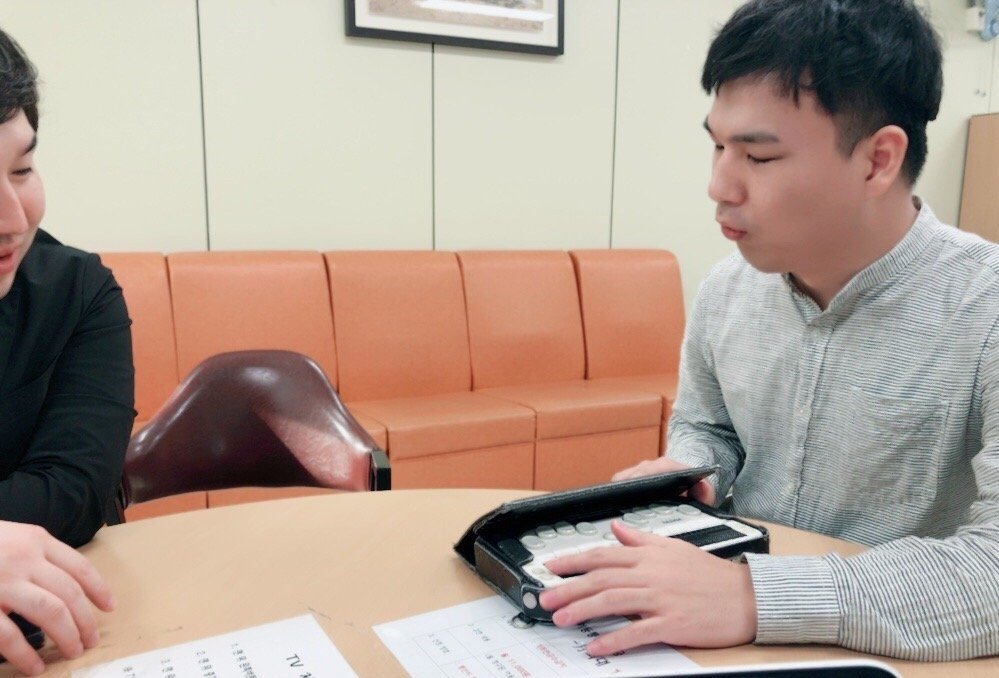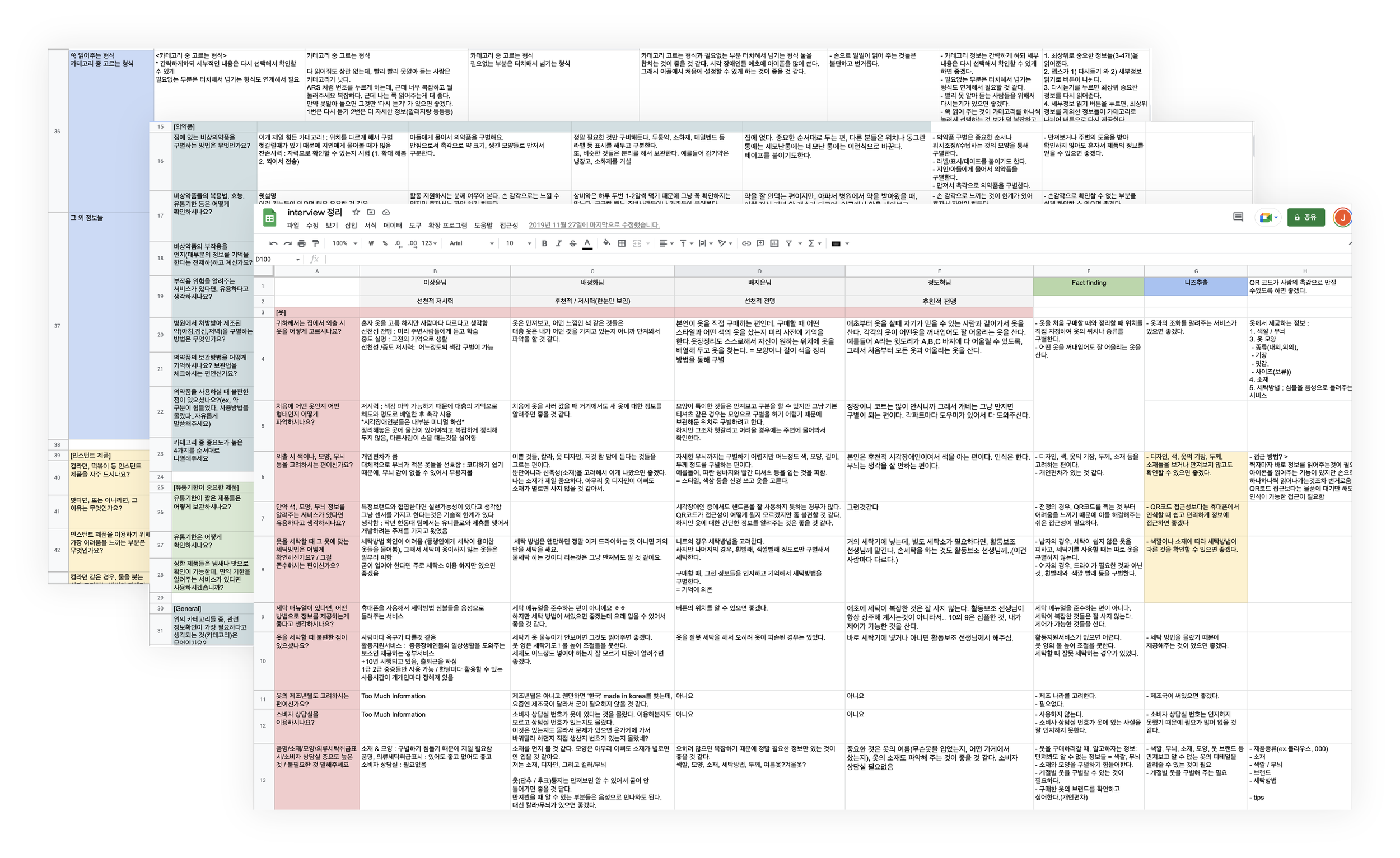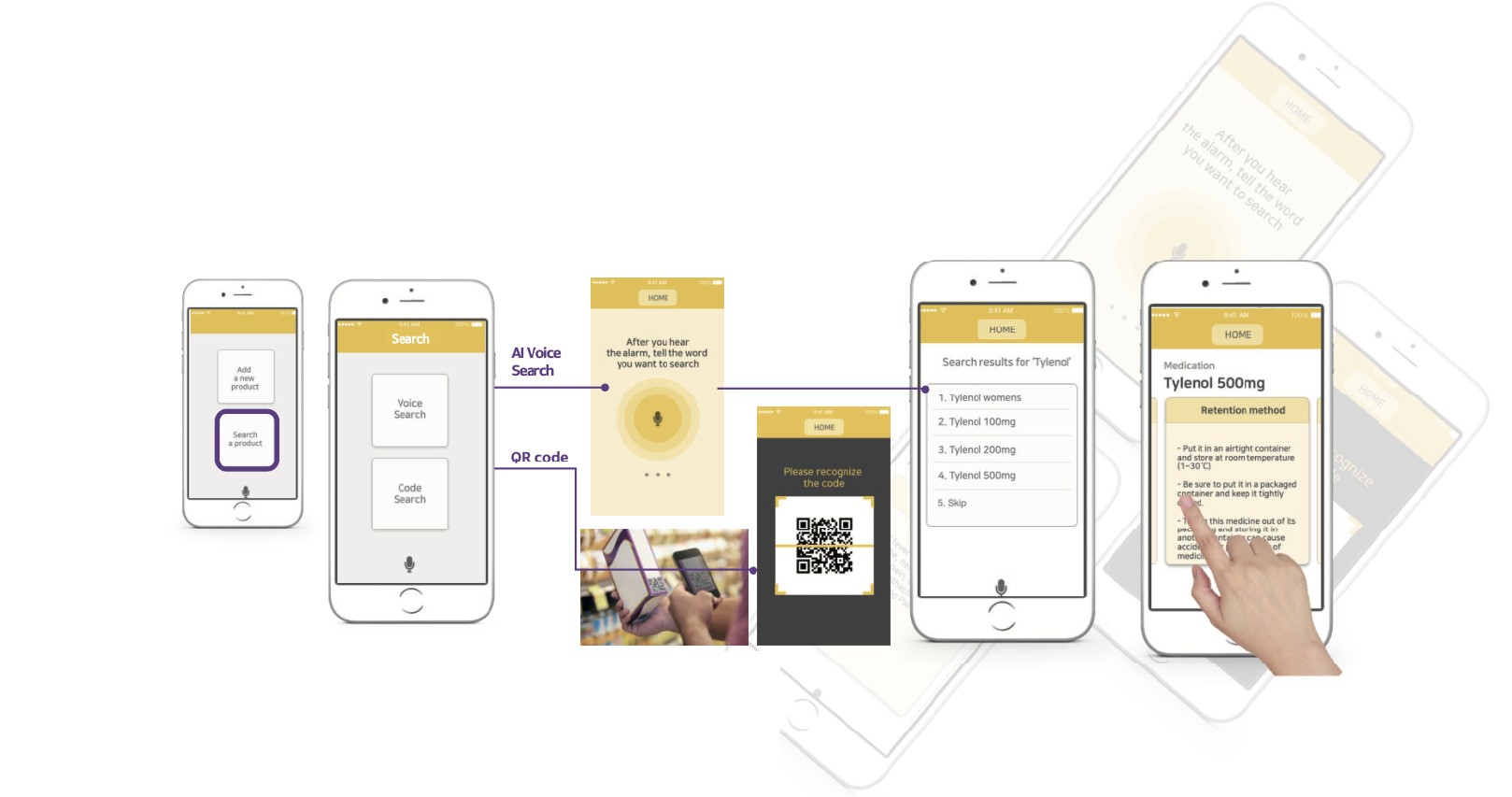Study of Voice-Based Crowdsourcing Platform for the Enhancement of Self-support for the Visually Impaired
Authors
Jini Kim, Ga Ram Song, HaYeong Kim, Enseo Kim, Wonsup Lee
Published in AHFE 2019 International Conference
Part of the Advances in Intelligent Systems and Computing
AHFE 2019 International Conference
This research suggested a voice-based crowdsourcing platform that can increase the independence of visually impaired people. This study used a qualitative analysis; one group interview and one in-depth interview. As a result, they expressed needs to know information that are directly related to health such as medicines, clothing, and food. This research suggested a platform construction based on the information most needed by the visually impaired.
This platform allows both people with visual disabilities and the public to freely share and utilize information. The application’s QR code and voice search functions provide immediate access to the various product information available from the platform. Users’ voluntary participation will provide an opportunity to register and modify product information needed. In addition, public institutions and companies will be able to use this voice-based crowdsourcing platform to promote independent living of visually impaired people.
Abstract
SeeD is a voice-based crowdsourcing platform that can increase the independence of visually impaired people
Solutions
Research Process
01 Necessity and Purpose of This Study
According to a study conducted by the Korea Food and Drug Administration (KFDA), 71 cases (44.10%) of disability grade 1 and 8 cases (4.97%) of grade 2 abused drug. It also appeared to be difficult to distinguish between medications for breakfast, lunch, and dinner, which posed the risk of side effects.
As the study shows, visually impaired people have great difficulty in classifying products or obtaining information on their own. So, it is important to make a way to easily obtain the necessary information for the view of the visually impaired. In conclusion, this study investigated a crowdsourcing platform which can improve the self-support by allowing the visually impaired to easily obtain the necessary information for everyday life through voice recognition.
02 User research & analysis
This study investigated a way to improve accessibility of information by using qualitative research to improve the experience of the visually impaired. Specifically, the first group interview was established to construct a voice-based crowdsourcing platform. the research hypothesis was tested on four visually impaired people in the in-depth survey.
1st User research - First Group Interview
We focused on
(a) inconvenience of purblind people’s daily life
(b) Utilization of information delivery via smart devices
2nd User research - Second Individual In-Depth Interview
We figured out
(a) The most needed information for the visually impaired people
(b) Preferred method of information delivery by the visually impaired people
(c) Need of crowdsourcing platform for self-supporting of the visually impaired people
03 Proposal of Voice-Based Crowdsourcing Platform
This study suggests the establishment of a ‘crowdsourcing platform’ in which the visually impaired and the public share information and use collected information together. It also seeks to establish guidelines for voice-based platforms that provide voice-based conversion of display-based information for people with visual impairments.
When it becomes possible to provide daily information through voice, it can be expected to enhance the independent lives of people who are blind. In addition, the main objective of this study is the creation of a virtuous and well intentioned platform for the public, including those who are visually impaired.
04 Prototype
This study investigated a way to improve accessibility of information by using qualitative research to improve the experience of the visually impaired. Specifically, the first group interview was established to construct a voice-based crowdsourcing platform. the research hypothesis was tested on four visually impaired people in the in-depth survey.
05 Prototype Usability Testing
Usability assessment assigned 11 participants to search for particular information about products using the application. (a) The result demonstrated, (i) visually impaired individuals were able to find information on their own with our platform and (ii) the time taken to complete given task has decreased by an average of 10 s and the number of errors reduced to less than two times on average which emphasized high level learnability after repeating task several times. (b) According to the interview result, (i) more than 90% of respondents said that the information divided into main and detailed parts was highly efficient. (ii) all participants felt the process to receive information using a platform to receive information is fast and easy.














